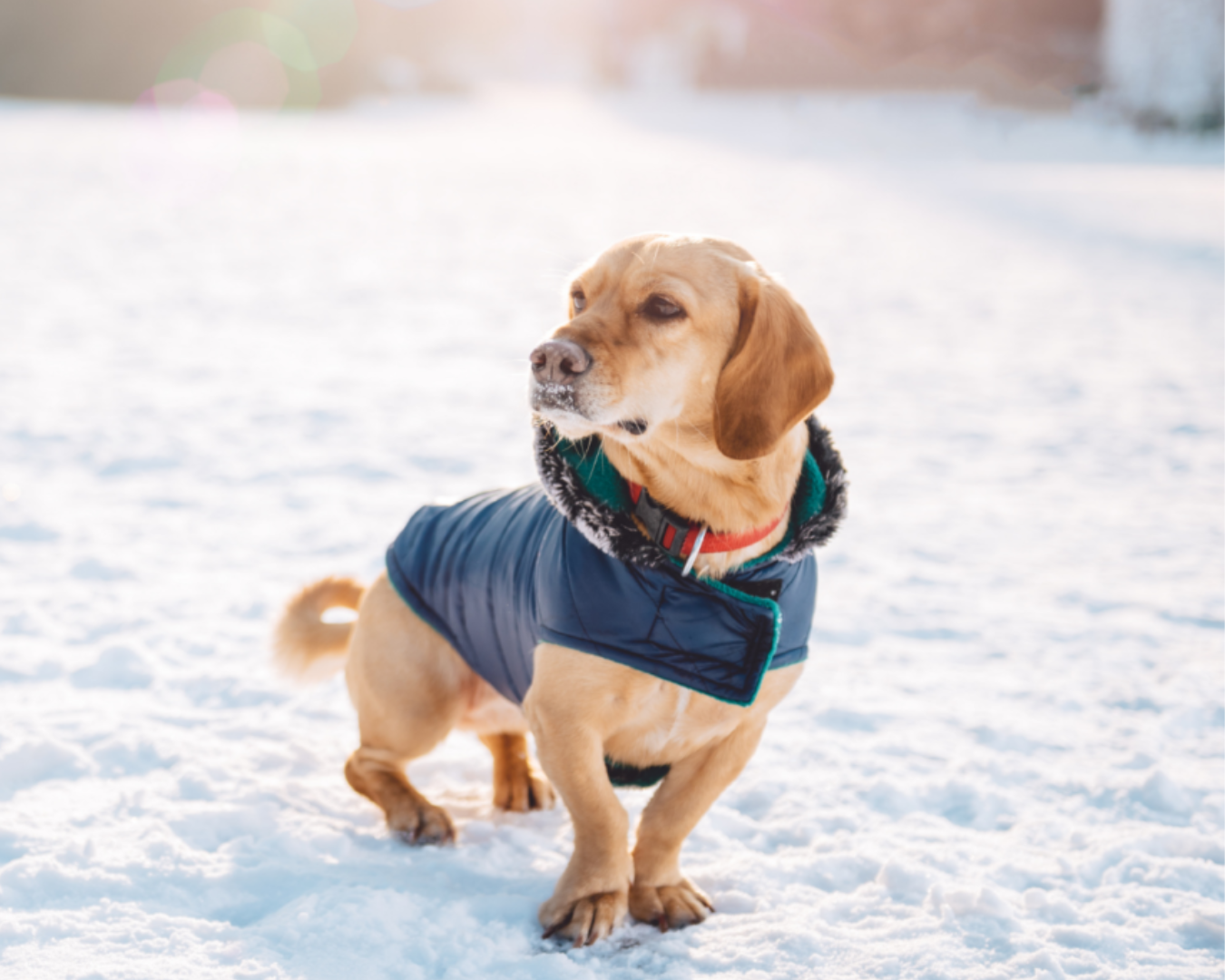The ISPCA is asking owners to ensure their pets are kept safely indoors as the temperature falls below zero degrees Celsius with snow and ice expected in many areas across the country. Although winter is the perfect time to snuggle up with your furry companions and keep each other warm, venturing outdoors in freezing temperatures can expose your pet to a variety of potential dangers. Before the thermometer dips, know these winter pet safety tips and ensure your best friend stays safe and cosy all season long.

Protect Your Pet’s Paws
Even during the cold winter months, dogs still need to spend some time outdoors for their daily exercise and potty routine. In the coldest climates, this means conquering icy and rough sidewalks covered with rock salt and de-icing chemicals. Place booties on your cat or dog for added protection; just be sure they’re comfortable wearing them!
Once you return inside, wipe down your pet’s paws thoroughly to remove any potential chemicals or debris.
Ensure They Are Identifiable
It is important they are kept on a lead and are microchipped as a permanent form of identification, should they escape from the cold and that your contact details are up-to-date on the microchip database too. If your pet should escape, you should contact your local animal rescue centre, veterinary practice, or dog pound, who will reunite you with your pet if they have picked it up. Snow can mask scents familiar to your pet and make it more difficult for them to find their way home if lost.
Get Your Home Winter Ready
Repeatedly coming out of the cold into the dry heat of your home can cause itchy, flaking skin. Keep your home humidified and towel dry your pet as soon as they comes inside, paying special attention to their feet and in-between the toes. Remove any snowballs from between their foot pads. Make sure your companion animal has a warm place to sleep, off the floor and away from all drafts. A cozy dog or cat bed with a warm blanket or pillow is perfect. If you opt to warm up by a fireplace, keep a close eye that your pet doesn’t get too close, especially as embers can be unpredictable.
The season is also a prime opportunity to resupply your pet’s occupying distractions—like chew toys for dogs or scratching posts for cats—to help them stay happy and busy for long periods at a time as you enjoy the season together.
Keep Them Warm
If you have a puppy, short-haired or old dog, you may want to buy them a winter dog coat ensuring their movement is not restricted and that they are happy to wear it. If you are walking when it’s dark, ensure your dog is visible with a shining collar or high-vis jacket. Avoid shaving your dog down to the skin in winter, as a longer coat will provide more warmth. If your dog is long-haired, simply trim them to minimize the clinging ice, salt crystals and de-icing chemicals that can dry their skin, and don’t neglect the hair between their toes. If your dog is short-haired, consider getting them a coat or sweater with a high collar or turtleneck with coverage from the base of the tail to the belly. For many dogs, this is regulation winter wear.
Manage Their Food
Just like humans, dogs and cats rely on calories for energy—and food provides the calories to fuel activities that help keep our fur friends warm, such as exercising and shivering.
Pets burn extra energy by trying to stay warm in the wintertime. Feeding your pet a little bit more during the cold weather months can provide much-needed calories, and making sure they have plenty of fresh water to drink will help keep them well-hydrated and their skin less dry.


